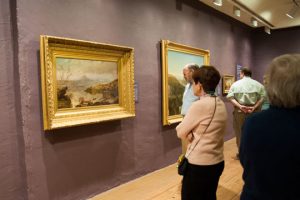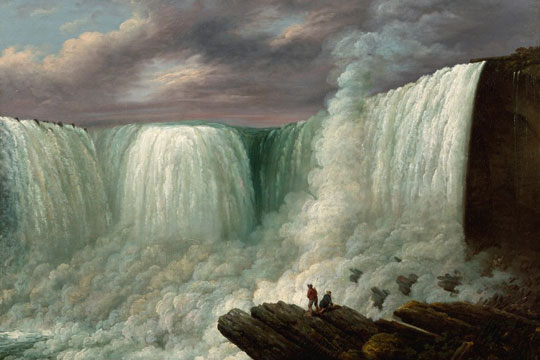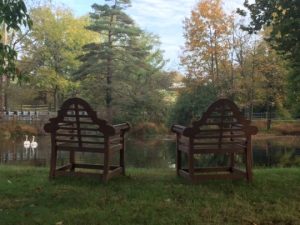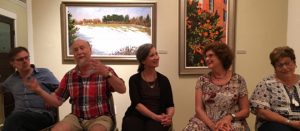The Hudson River Valley and the Brandywine Valley are hundreds of miles apart, but there’s as artistic trail connecting the two. It was the Hudson River School of Art that paved the way for the Brandywine School.
That connection is represented by the new exhibit, The Poetry of Nature: A Golden Age of American Landscape Painting, on display at the Brandywine River Museum of Art now through June 12.
The Hudson River School is credited with launching American landscape art, according to museum Director Tom Padon.
Pointing to paintings by Thomas Cole and Asher Durand, Padon said, “[they] were very consciously trying to determine what would constitute the first truly American art.”

Padon explained that the Hudson River School, which began roughly in the 1830s, determined that landscape would be the first American form of art, yet it differentiated itself from the earlier European tradition.
Nature, in the Hudson River School, was portrayed as grand, God’s gift to mankind. Also, when the human form was shown in the new American style, those figures were common people, not landed gentry.
“They really decided upon the landscape tradition because they thought it evoked several things, including the beauty, the natural resources that they thought were divinely given to the United States,” Padon said.
Padon went on to explain that there is more detail given to the trees in the Hudson River School than in the European tradition.
“[They’re] highly detailed, but often idealized views of nature,” he said. “It’s a very prosperous, God-given set of resources that were given for man to take advantage of.”
Yet, there is also a portent of conflict between man and nature in some of the works.
“There is this kind of messaging that this paradise is about to be lost because you’ll see houses, you’ll see some clear-cutting in the forest,” Padon said.
The inclusion of roaming cattle and sailboats also represent man’s intrusion in the idealized depiction of nature, Padon added.
In addition to Cole and Durand, the exhibit features the works of Albert Bierstadt, Jasper Cropsey, William T. Richards and Luisa Davis Minot. Minot’s “Niagara Falls” was used as the invitation piece for the exhibit.
There will be a Gallery Talk on the artists of the Hudson Valley School at the museum at 2 p.m. on March 30, led by Curator of Collections Virginia O’Hara.
There will also be a lecture — given by Linda Ferber, the senior art historian for the New York Historical Society — on the Hudson Valley School at 6 p.m. on April 13.
About Rich Schwartzman
Rich Schwartzman has been reporting on events in the greater Chadds Ford area since September 2001 when he became the founding editor of The Chadds Ford Post. In April 2009 he became managing editor of ChaddsFordLive. He is also an award-winning photographer.




Comments